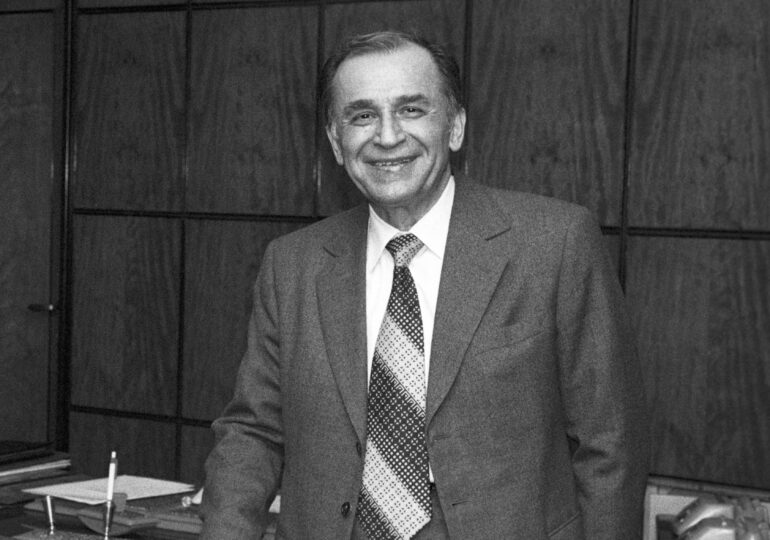Ion Iliescu, born on March 3, 1930, in Oltenița, Romania, is a prominent and polarizing figure in the modern political history of the country. Serving as the President of Romania in three non-consecutive terms (1990-1992, 1996 and 2000-2004), Iliescu played a central role in Romania’s transition from communist dictatorship to a democratic system.
His influence spanned decades, being seen as an advocate for political stability, yet criticized for his strong ties to Romania’s dictatorial past.
Communist Roots
Iliescu was born into a working-class family. His father, Alexandru Iliescu, was a devoted communist who died under mysterious circumstances, most likely due to his political activities. There are two theories, one suggesting he was assassinated in prison and the other due to a heart condition. His father’s activities deeply influenced Ion Iliescu.
He studied in Bucharest and later in the Soviet Union, at the Moscow Energy Institute, where he trained as an engineer. In Moscow, Iliescu came into contact with Marxist-Leninist ideology and established connections with Soviet elites. These experiences reinforced his attachment to communist doctrine, and upon his return to Romania, he quickly rose through the ranks of the Romanian Communist Party.
Rise in the Communist Party
Iliescu held several important positions under the communist regime of Gheorghe Gheorghiu-Dej and later Nicolae Ceaușescu. Initially viewed as a reformist and a potential successor to Ceaușescu, Iliescu fell out of favor with the increasingly authoritarian leader.
In the '70s, he was marginalized and transferred to less significant positions, but remained politically active and ideologically consistent.
The 1989 Revolution
The pivotal moment in Iliescu's career was the December 1989 Revolution. Amid growing discontent with Ceaușescu's repressive regime, protests erupted nationwide.
On December 22, 1989, after Ceaușescu fled Bucharest, Ion Iliescu became the leading figure of the National Salvation Front (FSN), a coalition of former communists and dissidents that took control of the country.
Iliescu quickly became the de facto leader of the state, announcing the capture and trial of Ceaușescu. While some saw the swift execution of the Ceaușescu couple as necessary to prevent chaos, others criticized the rushed procedure and lack of transparency. Nevertheless, Iliescu was widely recognized for bringing a degree of stability to a country in crisis.
Transition Period
As the leader of the National Salvation Front, Iliescu led the transition from Ceaușescu's totalitarian regime to a pluralist democracy.
In May 1990, he won the first free presidential elections in Romania with over 85% of the votes, a victory that showcased his popularity and the dominance of the FSN.
However, the beginning of his presidency was marked by controversies. Critics accused him of allowing former communist officials to remain in power.
The June 1990 Mineriad, when miners were called to Bucharest to suppress anti-government protests, tarnished his presidency. Although he denied direct responsibility, his call to the miners was perceived as tacit approval of violent repression.
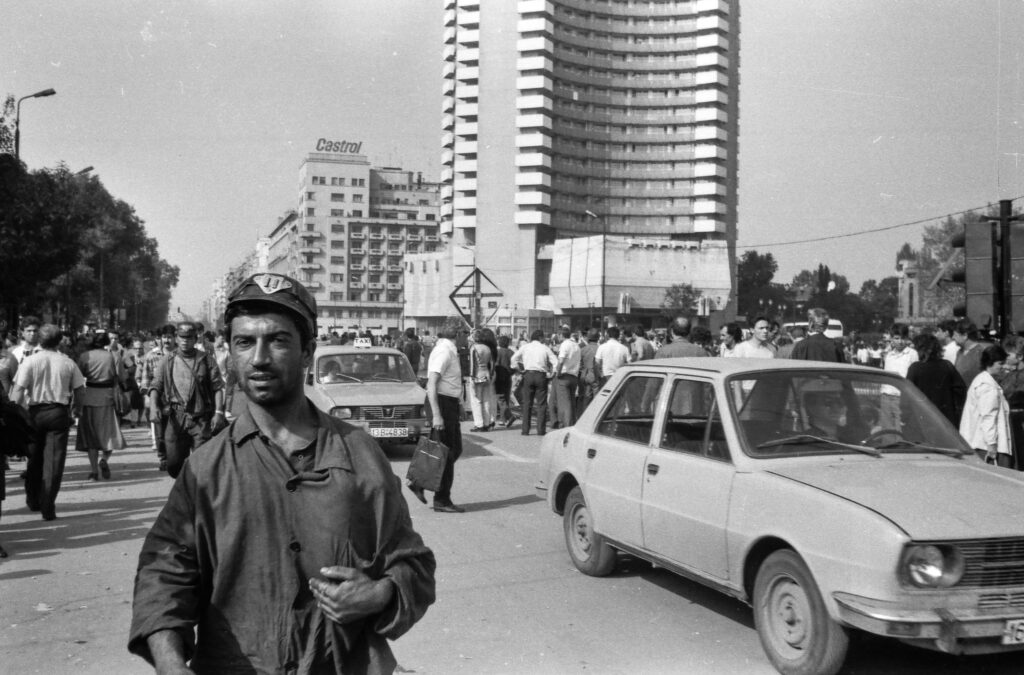
First Presidential Term
During his first term, Iliescu supported the adoption of a new constitution, enacted in 1991, which established Romania as a democratic republic.
However, economic reforms progressed slowly, and the sluggish pace of privatizations generated frustration. His administration was perceived as hesitant to fully embrace market reforms, opting for a cautious approach to capitalism.
In 1992, following a split within the FSN, Iliescu founded the Democratic National Salvation Front (FDSN), which later became the Social Democratic Party (PSD), a dominant political force for many years.
He won a full four-year term in 1992, after a two-year term leading the Constituent Assembly, but with a lower percentage, 61% of the votes, reflecting growing public discontent.
By 1996, the political landscape had changed. Iliescu lost the presidency to Emil Constantinescu, marking Romania's first peaceful transition of power — a significant moment.
Return to Power (2000–2004)
Iliescu returned to the presidency in 2000, amidst economic challenges and disappointment with post-communist reforms. His return was seen by some as a stabilizing factor, while others viewed it as a step backward.
During this term, Romania moved closer to joining the European Union and NATO, laying the groundwork for integration that would be completed shortly after his departure from office.
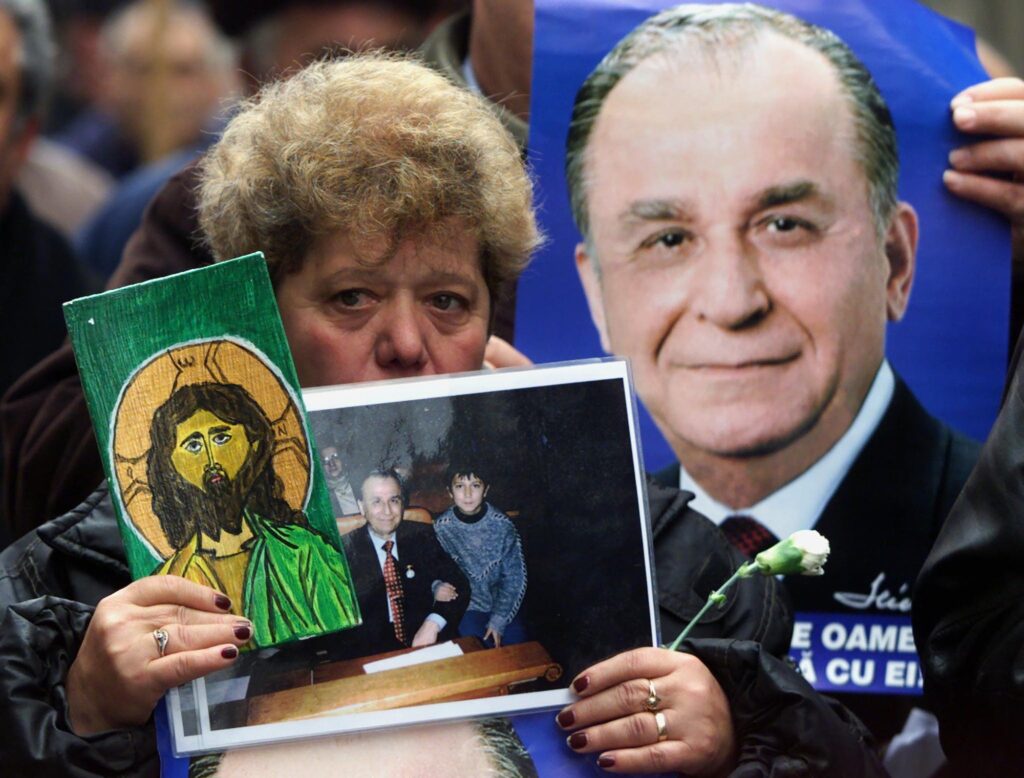
Despite his experience and statesmanlike attitude, Iliescu's third term was once again criticized, especially for how he handled past abuses. Efforts to condemn communist crimes were seen as superficial. However, his term ended in 2004 with Romania in a stronger international position than when he returned to office.
Legacy
Iliescu officially retired from politics after 2004, though he remained the honorary president of the Social Democratic Party for many years. He became a frequent commentator on political events and was often sought for his perspective on recent history.
His legacy remains deeply contested. Supporters see him as a guarantor of stability in a chaotic period, while critics accuse him of preserving the structures of the old regime under a democratic facade.
Iliescu and the King
The relationship between Ion Iliescu and King Michael I of Romania was tense and complex, largely reflecting post-communist attitudes of the political class towards the monarchy and symbols of the past.
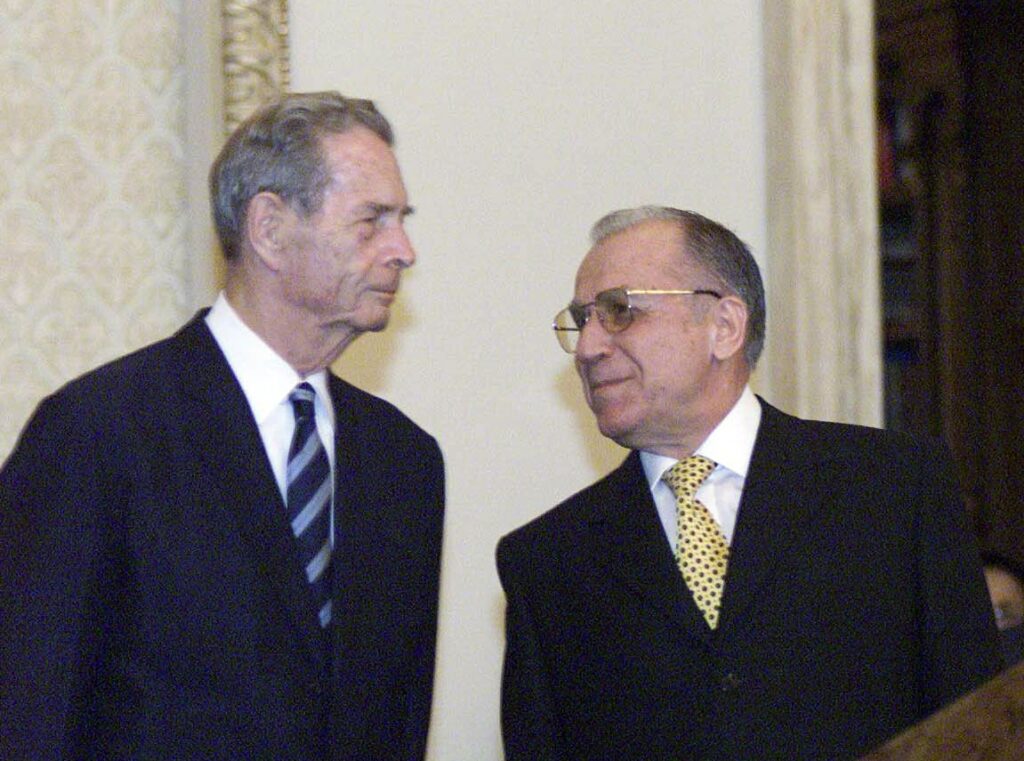
Communism
King Michael was forced to abdicate in 1947 by the communist regime, and the establishment of the Romanian People's Republic was solidified under Soviet influence.
Ion Iliescu, ideologically shaped in the communist system, inherited a republican and anti-monarchic vision, even after Ceaușescu's regime collapsed in 1989.
Refusal of Entry (1990)
One of the most controversial moments in their relationship occurred in 1990 when King Michael attempted to return to Romania for the first time after 1989, around Easter. Romanian authorities, under President Ion Iliescu's leadership, banned his entry, considering the visit a challenge and a threat to the new republic. The King was stopped at Otopeni airport and expelled.
This action sparked international outrage and upset among Romanian public opinion and monarchists, but was supported by a part of the political elite at the time, who feared the symbolic return of the monarchy.
Normalization of Relations (Post-1997)
After Emil Constantinescu became president in 1996, King Michael was officially invited to Romania, and his citizenship was restored in 1997. Although Iliescu was no longer in office, the change in attitude reflected a new political climate.
Subsequently, during his third term (2000–2004), the relationship with King Michael formally improved but remained cool and marked by differences in vision.
Without Monarchy
Ion Iliescu has always been reserved about the idea of restoring the monarchy, considering the republic as the legitimate form of government for post-communist Romania. He respected King Michael as a person but did not acknowledge any active political or symbolic role in Romania.
On the other hand, King Michael has always been moderate in expression and avoided direct attacks on Iliescu, preferring to promote reconciliation and unity.
The relationship between Ion Iliescu and King Michael was initially marked by hostility, especially in the '90s when Iliescu acted decisively to block the king's return to Romanian public life. In the 2000s, the relationship relaxed amid the country's democratic maturity, but fundamental divergences in historical vision and forms of governance remained.
Iliescu and Gorbachev, the Last Communist Leaders
The relationship between Ion Iliescu and Mikhail Gorbachev was characterized by ideological alignment, mutual recognition, but also distinct national trajectories. Both were shaped within the communist system, inclined towards reform to varying degrees, and became key figures in the final stages of the Cold War. However, their personal relationship was more influenced by context than direct collaboration.
Ion Iliescu studied in the Soviet Union (at the Moscow Energy Institute) in the 1950s, where he came into contact with Soviet ideology and the elites of the time, including future leaders.
Although there is no public evidence that Iliescu and Gorbachev had a close personal relationship in their youth, it is highly likely that Iliescu, as a young Romanian communist, was aware of Gorbachev's political evolution in the 1980s.
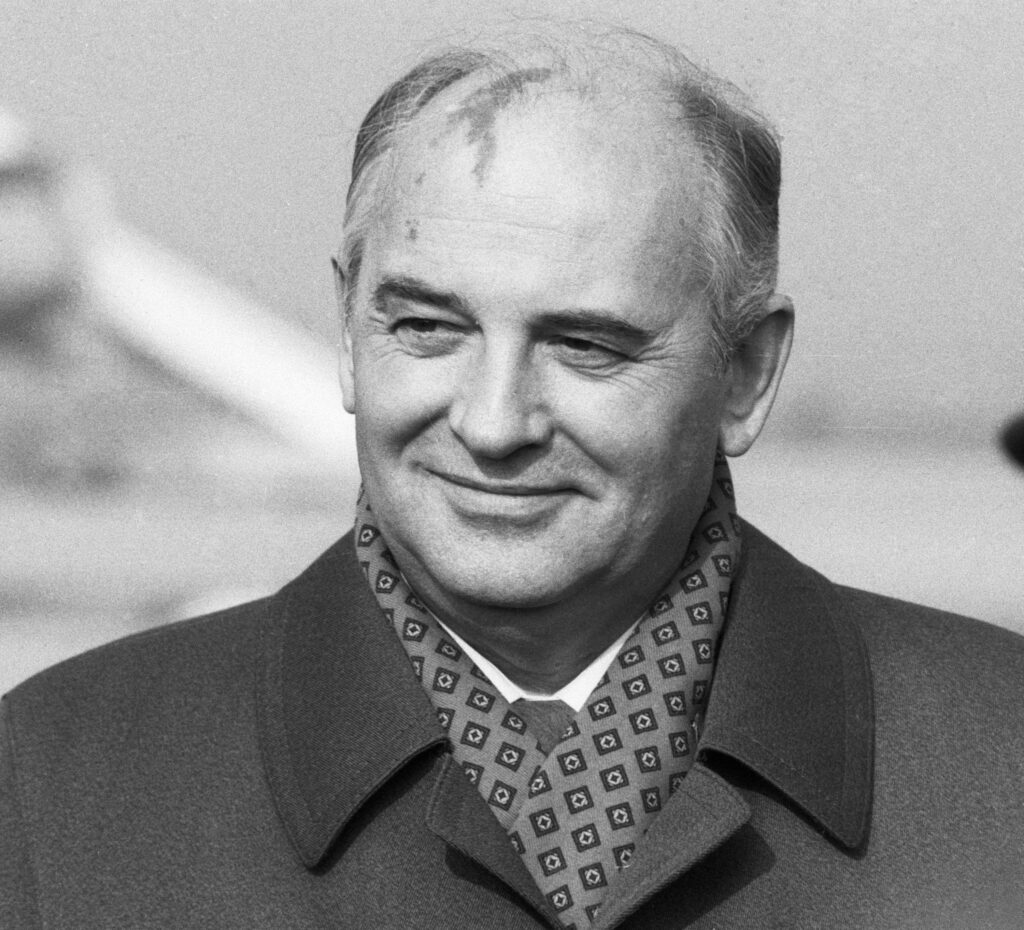
Gorbachev's Perestroika and Iliescu's Rise
Gorbachev came to power in the USSR in 1985 and launched the reforms of Perestroika (restructuring) and Glasnost (transparency). These reforms had a strong impact on the countries of the Eastern Bloc.
Ion Iliescu, considered a reformist within the Romanian Communist Party, had already been marginalized by Ceaușescu. He later became the main figure of the Romanian Revolution in December 1989, following Ceaușescu's downfall.
Iliescu's political comeback in 1989 was ideologically aligned with Gorbachev's ideas, especially with the vision of "reforming socialism" or "socialism with a human face."
Post-1989 Dynamics
After 1989, Iliescu initially avoided fully embracing Western capitalism, preferring a gradual transition, similar to Gorbachev's cautious approach.
Gorbachev has, on some occasions, expressed favor towards Iliescu's leadership and the way Romania transitioned from dictatorship to a new regime.
Similarly, Iliescu has often spoken respectfully of Gorbachev, appreciating his role in the peaceful transformation of the Soviet Bloc and the avoidance of violent repression, as seen in Hungary or Czechoslovakia in the past.
Differences
- Gorbachev's reforms ultimately led to the collapse of the Soviet Union in 1991 and his removal from power.
- Iliescu, on the other hand, remained politically relevant, winning the presidency multiple times and leading Romania through the post-communist transition period.
- Despite their similar starting points, Iliescu survived politically, while Gorbachev became a symbol of lost power and missed opportunities in Russia.
Public Perception
- Both leaders are considered figures of transition, but public opinions about them remain divided.
- Gorbachev was admired in the West but rejected in Russia.
- Iliescu was appreciated for stability but criticized for maintaining structures of the old regime under the facade of democracy.
The relationship between Ion Iliescu and Mikhail Gorbachev was ideologically favorable but not personal.
Iliescu's political vision was influenced by Gorbachev's reformed socialism, and both played essential roles in the transition periods of their countries.
However, Iliescu acted more pragmatically, while Gorbachev envisioned a global reformist movement that ultimately cost him power.

